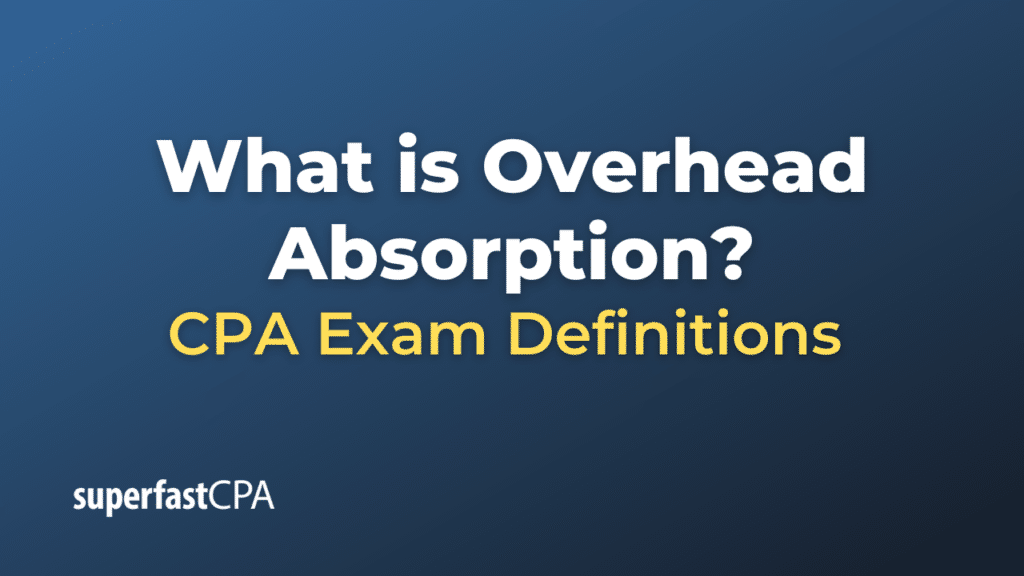Overhead Absorption
Overhead absorption, also known as overhead allocation, is a process used in cost accounting where overhead costs are distributed across different cost objects, such as products, services, or departments. The goal is to better understand the true cost of producing a product or delivering a service, beyond just the direct costs.
Overhead costs are the indirect costs of production, not directly tied to a specific product or service. These can include rent, utilities, insurance, and salaries of administrative staff, among others. Since these costs aren’t linked to one specific product or service, they’re distributed or ‘absorbed‘ into the cost of all products or services produced or provided by a company.
The method of overhead absorption depends on the chosen absorption base, which can be direct labor hours, machine hours, or direct labor costs, among others. The chosen base should have a reasonable correlation with the incurrence of overhead costs.
For example, let’s say a company incurs $1,000,000 in overhead costs annually and decides to use direct labor hours as the base for absorption. If the company’s workforce works 200,000 direct labor hours over the course of the year, the overhead absorption rate would be $5 per labor hour ($1,000,000 / 200,000 hours). This means that for every hour worked, $5 of overhead costs are allocated to the product being produced.
It’s important to note that overhead absorption does not change the total amount of overhead costs a company incurs. Rather, it’s an accounting method used to distribute these costs across products or services to give a more accurate picture of the true cost of each product or service.
Example of Overhead Absorption
An example of overhead absorption in the context of a manufacturing company.
Let’s consider a furniture manufacturing company that produces tables and chairs. The company’s total overhead costs (utilities, rent, indirect labor, etc.) amount to $200,000 for the year. The company decides to use machine hours as the basis for allocating these overhead costs, as it considers this the best measure of the resources consumed by each product.
Let’s assume that during the year, the company used a total of 10,000 machine hours for the production of tables and chairs. By dividing the total overhead by the total machine hours, the company determines an overhead absorption rate of per machine hour ($200,000 / 10,000 machine hours).
Now, if a specific table required 5 machine hours to produce, the overhead cost allocated or “absorbed” by that table would be $100 ($20 per machine hour * 5 machine hours). This overhead cost would be added to the direct costs (e.g., wood, screws, direct labor) to calculate the total production cost of the table.
Overhead absorption helps the company to understand the true cost of producing each table and chair, taking into account both the direct costs and a reasonable share of the indirect costs. This information can then be used for pricing decisions, profitability analysis, and other important business decisions.














